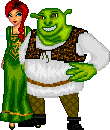Representations of women across all media tend to highlight the following:
· beauty (within narrow conventions)
· size/physique (again, within narrow conventions)
· sexuality (as expressed by the above)
· emotional (as opposed to intellectual) dealings
· relationships (as opposed to independence/freedom)
Women are often represented as being part of a context (family, friends, colleagues) and working/thinking as part of a team. In drama, they tend to take the role of helper (Propp) or object, passive rather than active. Often their passivity extends to victimhood (see the discussion of the misogynistic PantyRaider below). Men are still represented as TV drama characters up to 3 times more frequently than women, and tend to be the predominant focus of news stories.
The representations of women that do make it onto screen do tend to be stereotypical, in terms of conforming to societal expectations, and characters who do not fit into the mould tend to be seen as dangerous and deviant.
Discussions of women's representation in the media tend to revolve around the focus on physical beauty to the near-exclusion of other values, the lack of powerful female role models, and the extremely artificial nature of such portrayals, which bear little or no relation to the reality experience by women across the planet.
Friday, September 29, 2006
Subscribe to:
Post Comments (Atom)



No comments:
Post a Comment